-
 Bitcoin
Bitcoin $114800
-3.31% -
 Ethereum
Ethereum $3641
-5.84% -
 XRP
XRP $2.948
-6.36% -
 Tether USDt
Tether USDt $0.9998
-0.03% -
 BNB
BNB $772.4
-3.97% -
 Solana
Solana $169.1
-6.68% -
 USDC
USDC $0.9999
-0.01% -
 Dogecoin
Dogecoin $0.2056
-8.09% -
 TRON
TRON $0.3247
-0.18% -
 Cardano
Cardano $0.7239
-7.43% -
 Hyperliquid
Hyperliquid $39.71
-8.60% -
 Stellar
Stellar $0.3912
-7.84% -
 Sui
Sui $3.510
-10.17% -
 Chainlink
Chainlink $16.59
-8.03% -
 Bitcoin Cash
Bitcoin Cash $560.5
-3.65% -
 Hedera
Hedera $0.2464
-10.08% -
 Avalanche
Avalanche $22.03
-7.87% -
 Ethena USDe
Ethena USDe $1.001
-0.02% -
 UNUS SED LEO
UNUS SED LEO $8.947
0.21% -
 Toncoin
Toncoin $3.389
-2.58% -
 Litecoin
Litecoin $104.9
-5.23% -
 Shiba Inu
Shiba Inu $0.00001220
-6.67% -
 Polkadot
Polkadot $3.652
-6.10% -
 Uniswap
Uniswap $9.213
-9.05% -
 Monero
Monero $307.2
-2.93% -
 Dai
Dai $0.9998
-0.02% -
 Bitget Token
Bitget Token $4.367
-2.89% -
 Cronos
Cronos $0.1374
-6.80% -
 Pepe
Pepe $0.00001056
-8.65% -
 Aave
Aave $257.3
-7.31%
How to judge the short-term rebound buying point of 5-minute RSI bottom divergence + 15-minute breakthrough of the descending channel?
A 5-minute RSI bottom divergence combined with a confirmed 15-minute descending channel breakout signals a high-probability reversal, especially with rising volume and oversold conditions.
Jul 30, 2025 at 09:16 pm
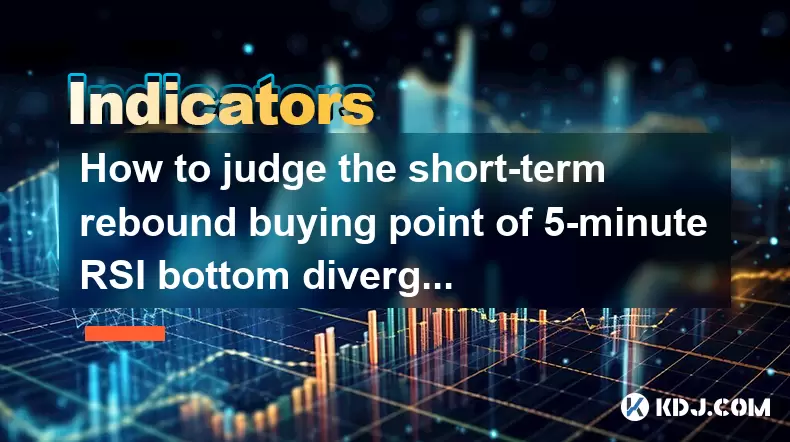
Understanding 5-Minute RSI Bottom Divergence
When analyzing short-term price movements in cryptocurrency trading, the 5-minute RSI bottom divergence is a powerful signal indicating potential reversal. The Relative Strength Index (RSI) measures momentum and is typically set to a 14-period default. A bottom divergence occurs when the price makes a lower low, but the RSI forms a higher low, suggesting weakening downward momentum. This discrepancy implies that selling pressure is decreasing even as price continues to drop, often preceding a rebound.
To identify this pattern, traders must first locate two consecutive troughs on the 5-minute chart. The second trough should be lower than the first in price, while the corresponding RSI value at the second trough must be higher. This contradiction between price and momentum is the core of divergence. It’s crucial to confirm that the RSI remains below 30, indicating oversold conditions, which strengthens the validity of the signal. Using RSI with smoothing, such as a 3-period moving average on the RSI line, can reduce false signals caused by volatility.
Traders should also pay attention to volume during the formation of the second low. A decrease in selling volume supports the idea of weakening bearish momentum. This divergence alone is not sufficient for entry but serves as a preliminary alert that a reversal may be near, especially when combined with other confirmatory indicators.
Analyzing the 15-Minute Descending Channel Breakout
A descending channel on the 15-minute chart is formed by drawing two parallel trendlines: the upper line connects a series of lower highs, and the lower line connects a series of lower lows. This pattern reflects a consistent downtrend where price is confined between these boundaries. A breakout occurs when the price closes above the upper trendline with strong momentum, ideally accompanied by increased volume.
To draw the channel accurately, at least three swing highs are required to define the upper boundary, and two corresponding swing lows to define the lower boundary. The more times price touches these lines without breaking, the stronger the channel. When price finally breaks above the upper line, it suggests that buyers are overpowering sellers, potentially signaling the end of the short-term downtrend.
Confirmation of the breakout is essential. A single candle closing above the upper trendline is the minimum requirement. However, stronger confirmation includes a follow-up candle that continues upward or holds above the channel. Traders should avoid acting on wicks or intrabar spikes that briefly exit the channel but close back inside. The breakout becomes more reliable when it coincides with high trading volume, especially in major cryptocurrencies like Bitcoin or Ethereum, where volume data is more trustworthy.
Combining RSI Divergence and Channel Breakout for Entry
The optimal short-term buying point arises when both conditions are met simultaneously: the 5-minute RSI shows bottom divergence, and the 15-minute chart exhibits a confirmed breakout from a descending channel. This multi-timeframe confluence increases the probability of a successful trade.
- Check the 5-minute chart for a valid RSI bottom divergence with the second low in price but higher RSI reading
- Switch to the 15-minute chart and confirm that price has closed above the upper boundary of the descending channel
- Ensure the breakout candle is supported by above-average volume
- Wait for the next 15-minute candle to open and confirm it remains above the breakout level
Entry can be executed at the opening of the third 15-minute candle after the breakout, provided the 5-minute RSI remains above its previous low. This delay helps filter false breakouts. Alternatively, a limit order can be placed slightly above the breakout candle’s high to ensure execution only if momentum continues.
Position size should be adjusted based on the distance to the nearest support level below, with stop-loss orders placed just below the most recent swing low on the 15-minute chart. This setup balances risk and reward while capitalizing on early reversal signals.
Setting Stop-Loss and Take-Profit Levels
Risk management is critical when trading based on technical patterns. After entering a long position, the stop-loss should be placed beneath the latest price low that formed the second trough in the 5-minute RSI divergence. This level represents the point at which the bearish trend resumes, invalidating the reversal thesis.
For take-profit, consider the height of the descending channel on the 15-minute chart. Measure the vertical distance between the upper and lower trendlines at the breakout point. Project this distance upward from the breakout level to set a realistic initial target. This method, known as measured move projection, is widely used in technical analysis.
Alternatively, take-profit can be set at the nearest resistance level, such as a previous consolidation zone or a Fibonacci retracement level (e.g., 61.8%). Traders may choose to scale out of the position—selling half at the first target and letting the remainder run with a trailing stop.
Common Pitfalls and How to Avoid Them
Many traders misinterpret RSI divergence or premature breakouts, leading to losses. One common error is acting on divergence without confirmation. Just because RSI forms a higher low doesn’t guarantee price will reverse. Always wait for the 15-minute breakout to confirm the shift in momentum.
Another mistake is ignoring volume during the breakout. A breakout on low volume is suspect and often reverses quickly. In cryptocurrency markets, where manipulation is possible, volume analysis helps distinguish genuine moves from fakeouts.
Using inconsistent timeframes can also distort signals. Ensure that the 5-minute and 15-minute charts are aligned in their session timing—avoid mixing different exchange data or delayed feeds. Synchronize charts to the same exchange and data source.
Lastly, overlooking market context can be detrimental. If the broader market is in a strong downtrend or a major news event is pending, even strong technical signals may fail. Always assess the higher timeframe (e.g., 1-hour or 4-hour) trend and major support/resistance zones before executing.
Frequently Asked Questions
What is the ideal RSI setting for detecting bottom divergence on a 5-minute chart?
The standard 14-period RSI is recommended for detecting divergence. Adjusting it to 9 or 10 can make it more sensitive, but it also increases false signals. Stick with 14-period RSI and apply a 3-period moving average to smooth the line for clearer divergence identification.
How do I confirm a valid breakout from a descending channel on the 15-minute chart?
A valid breakout requires a full candle close above the upper trendline, not just a wick. Confirm with volume—look for a spike in volume on the breakout candle. Additionally, the next candle should not close back inside the channel. If it does, the breakout is invalid.
Can this strategy be applied to all cryptocurrencies?
This strategy works best on high-liquidity pairs such as BTC/USDT, ETH/USDT, or other top-tier altcoins with consistent volume. Low-cap or low-volume coins are prone to whipsaws and manipulation, making divergence and breakout signals less reliable.
Should I use additional indicators to strengthen this setup?
Yes, combining with volume profile or moving averages can help. For example, a breakout coinciding with price crossing above the 20-period EMA on the 15-minute chart adds confirmation. The MACD histogram turning positive on the 5-minute chart can also support the divergence signal.
Disclaimer:info@kdj.com
The information provided is not trading advice. kdj.com does not assume any responsibility for any investments made based on the information provided in this article. Cryptocurrencies are highly volatile and it is highly recommended that you invest with caution after thorough research!
If you believe that the content used on this website infringes your copyright, please contact us immediately (info@kdj.com) and we will delete it promptly.
- Bitcoin, Ethereum, and Investor Behavior: A New York Minute on Crypto Trends
- 2025-08-01 15:10:12
- Tether's Q2 Triumph: USDT Supply Soars Amidst Profit Surge!
- 2025-08-01 15:10:12
- Ethereum ETF Holdings: A Corporate Treasury Revolution?
- 2025-08-01 15:30:12
- Ethereum's Wild Ride: Funding Rates, Price Drops, and Retail to the Rescue!
- 2025-08-01 15:30:12
- Ethereum Under Pressure: Crypto Market Drop Explained
- 2025-08-01 15:35:11
- Ethereum ETF Mania: Inflows Surge, Market Rises, What's Next?
- 2025-08-01 15:35:11
Related knowledge

What is the difference in KDJ signal interpretation between a trending and a ranging market?
Aug 01,2025 at 03:56pm
Understanding the KDJ Indicator in Cryptocurrency TradingThe KDJ indicator is a momentum oscillator widely used in cryptocurrency trading to identify ...

Does the KDJ indicator work well for low-liquidity crypto assets?
Aug 01,2025 at 02:01pm
Understanding the KDJ Indicator in Cryptocurrency TradingThe KDJ indicator is a momentum oscillator derived from the Stochastic Oscillator, widely use...
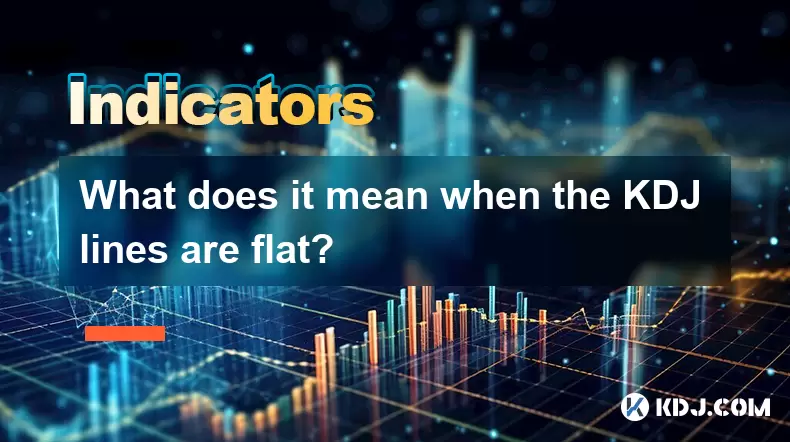
What does it mean when the KDJ lines are flat?
Aug 01,2025 at 03:22pm
Understanding the KDJ Indicator in Cryptocurrency TradingThe KDJ indicator is a momentum oscillator widely used in cryptocurrency technical analysis t...
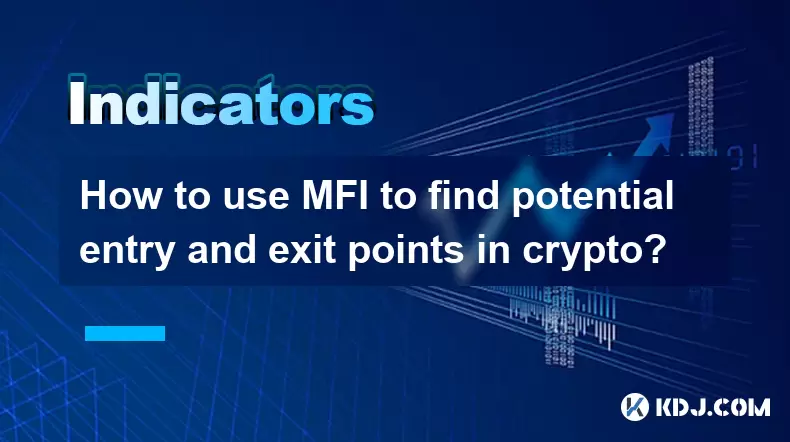
How to use MFI to find potential entry and exit points in crypto?
Aug 01,2025 at 02:35pm
Understanding the MFI Indicator in Cryptocurrency TradingThe Money Flow Index (MFI) is a momentum oscillator used to measure the strength and directio...
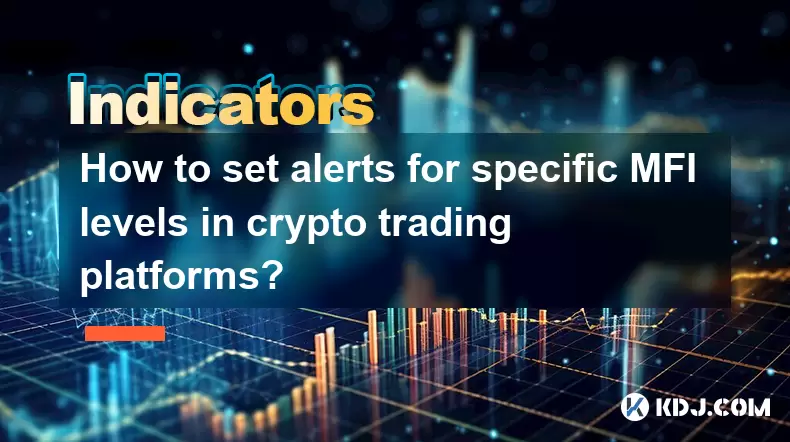
How to set alerts for specific MFI levels in crypto trading platforms?
Aug 01,2025 at 12:42pm
Understanding the Money Flow Index (MFI) in Crypto TradingThe Money Flow Index (MFI) is a momentum oscillator that measures the flow of money into and...
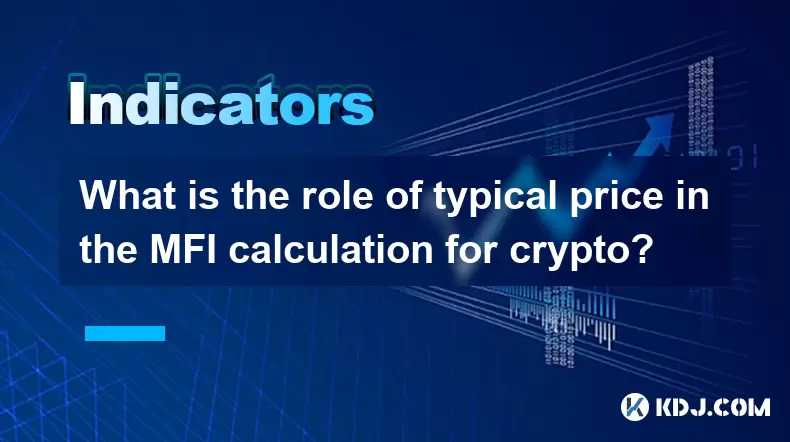
What is the role of typical price in the MFI calculation for crypto?
Aug 01,2025 at 12:21pm
Understanding the Typical Price in MFI for Cryptocurrency AnalysisThe Typical Price plays a crucial role in the calculation of the Money Flow Index (M...

What is the difference in KDJ signal interpretation between a trending and a ranging market?
Aug 01,2025 at 03:56pm
Understanding the KDJ Indicator in Cryptocurrency TradingThe KDJ indicator is a momentum oscillator widely used in cryptocurrency trading to identify ...

Does the KDJ indicator work well for low-liquidity crypto assets?
Aug 01,2025 at 02:01pm
Understanding the KDJ Indicator in Cryptocurrency TradingThe KDJ indicator is a momentum oscillator derived from the Stochastic Oscillator, widely use...

What does it mean when the KDJ lines are flat?
Aug 01,2025 at 03:22pm
Understanding the KDJ Indicator in Cryptocurrency TradingThe KDJ indicator is a momentum oscillator widely used in cryptocurrency technical analysis t...

How to use MFI to find potential entry and exit points in crypto?
Aug 01,2025 at 02:35pm
Understanding the MFI Indicator in Cryptocurrency TradingThe Money Flow Index (MFI) is a momentum oscillator used to measure the strength and directio...

How to set alerts for specific MFI levels in crypto trading platforms?
Aug 01,2025 at 12:42pm
Understanding the Money Flow Index (MFI) in Crypto TradingThe Money Flow Index (MFI) is a momentum oscillator that measures the flow of money into and...

What is the role of typical price in the MFI calculation for crypto?
Aug 01,2025 at 12:21pm
Understanding the Typical Price in MFI for Cryptocurrency AnalysisThe Typical Price plays a crucial role in the calculation of the Money Flow Index (M...
See all articles

























































































